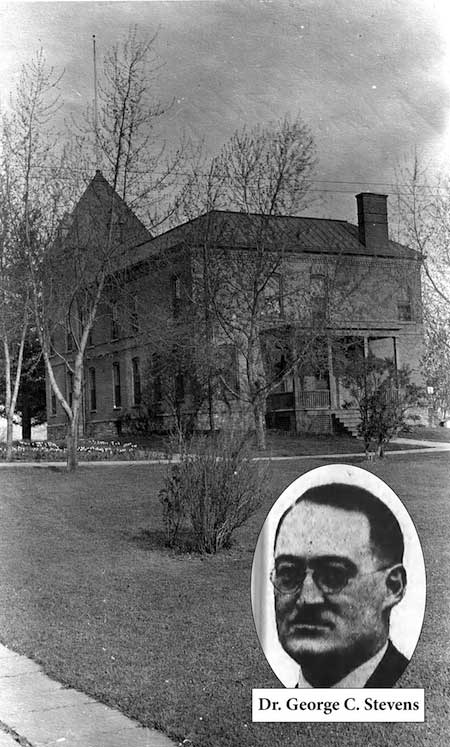Prison superintendent had tumultuous time in Albion in 1930s
Albion, which is home to a women’s prison, has been ‘rehabilitating’ women for more than a century
“Overlooked Orleans” – Vol. 4, No. 44

The Western House of Refuge opened on December 8, 1893, but did not “receive” any inmates until January of 1894. This institution represented a rather interesting period in the U.S. penal system, where women between the ages of 16 and 30 were sent for “rehabilitation.” Those guilty of crimes ranging from petit larceny to public intoxication, prostitution, or “waywardness” found themselves committed to the institution for a period of three to five years. During that time they received instruction in the domestic sciences – cooking, housekeeping, sewing, laundry, etc.
In 1923, the institution’s name was changed to the Albion State Training School and became the female equivalent of the Institution for Mentally Defective Males located at Napanoch. Although the name was changed to the Institution for Mentally Defective Females around 1931, the harsh name carried an undesirable connotation and the name reverted back to the Albion State Training School shortly after. The first head of the institution, Dr. Gordon F. Willey, made quick work of bringing “defectives” from Bedford Hills in Westchester County while sending “normals” downstate.
On October 1, 1932, Dr. George C. Stevens, a psychiatrist who worked at the Gowanda State Hospital relocated to Albion and took charge as superintendent. The Annual Report from 1933 shows a total increase in the number of inmates from 132 in 1932 to 168 in 1933. During that time, 34 women were committed for crimes ranging from “endangering the morals of a minor” and incest to forgery, intoxication, burglary, larceny, and vagrancy. Of those committed in 1933, all the women were first time offenders between the ages of 16 and 61; 14 were married, 15 single, two widowed, and three divorced. The majority of those committed held a common school education, while two could neither read nor write.
The tenure of Dr. Stevens was a tumultuous one, hindered by conflicts with employees and struggles with the School’s Board of Visitors. Upon his arrival to Albion, a report identified a large number of significant repairs and needed improvements. Although the Commissioner of Correction agreed with the assessment of the facilities, with an estimated cost of $1.5 million, members of the community felt that the requested funding was excessive. In addition to building improvements, Stevens requested funding to hire a social worker, a psychologist, an assistant physician, a physical director, a first assistant matron, a cook, and a laborer despite relatively stagnant rates of incarceration.
Aside from the excessive expenses, Stevens failed to win over the support of the community when he suspended Dr. Eli Efron, the assistant superintendent, and Edward Van Vleet, the farm superintendent. Although Stevens claimed that both men were discharged as the result of insubordination, rumors swirled throughout the community, some claiming that Stevens had evicted the Efron and Van Vleet families from their residences at the Training School without food or shelter.
No individual was more outraged at Stevens’ behavior than Marc Wheeler Cole, Sr. of Albion. A one-time New York State Assemblyman whose political career was cut short by his failure to adhere to party politics, Cole was vocal in his distaste for the unprofessional behavior of the superintendent. “This community is shocked and unanimously indignant at the hasty, unjust, and tyrannical action of the superintendent of the Albion State Training school in the unwarranted suspension of employees at an order from him calling for eviction of the assistant superintendent from his home and causing him, with a wife and two children, to seek shelter in the community,” Cole sent in a telegram, “…We demand, therefore, the immediate removal of all authority from the present superintendent pending further investigation.”
Although Stevens claimed that the discharged employees in question were “blocking his program from the start,” he found little sympathy from residents. Cole rallied his “troops,” forming an Albion Citizens’ Committee to pursue Stevens’ resignation while focusing on the waste and excess of the superintendent’s administration. To make matters worse, Marc Wheeler Cole, Jr., lodged a complaint against Stevens for illegal voting in the November 7th election. Stevens, an immigrant from England, had just secured his naturalization papers in September and failed to wait the required 90 days before voting.
Following an intense and spiteful battle, Stevens formally resigned his position on February 15, 1934; he was replaced by Dr. Walter B. Martin, a psychiatrist at Attica Prison. The administration building, one of the structures targeted for the massive capital project upon Stevens’ appointment, was rebuilt at a cost of $298,950 shortly after.













































































